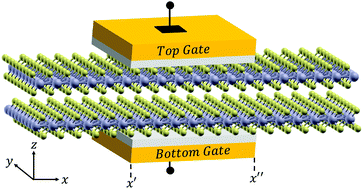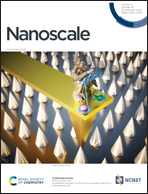Gate-controlled spin–valley–layer locking in bilayer transition-metal dichalcogenides
Abstract
The interplay between various internal degrees of freedom of electrons is of fundamental importance for designing high performance electronic devices. A particular instance of this interplay can be observed in bilayer TMDs due to the combined effect of spin–orbit and interlayer couplings. We study the transport of spin, valley and layer pseudospin, generally, through a magnetoelectric barrier in AB-stacked bilayer TMDs and demonstrate an electrically controllable platform for multifunctional and ultra-high-speed logic devices. Perfect spin and valley polarizations as well as good layer localization of electrons occur in a rather large range of Fermi energies for moderate electric and magnetic fields. Any number of these polarizations can be inverted by adjusting the two potential gates on the two layers. Furthermore, the conditions for the excellent polarizations are determined for the spin, valley and layer degrees of freedom, in terms of the adjustable system parameters. We discuss the individual electric and magnetic barriers and show that the single electric barrier acts as a bipolar pseudospin semiconductor with opposite polarizations for the conduction and valence bands. The results of this study pave the way for multifunctional pseudospintronic applications based on 2D materials.



 Please wait while we load your content...
Please wait while we load your content...